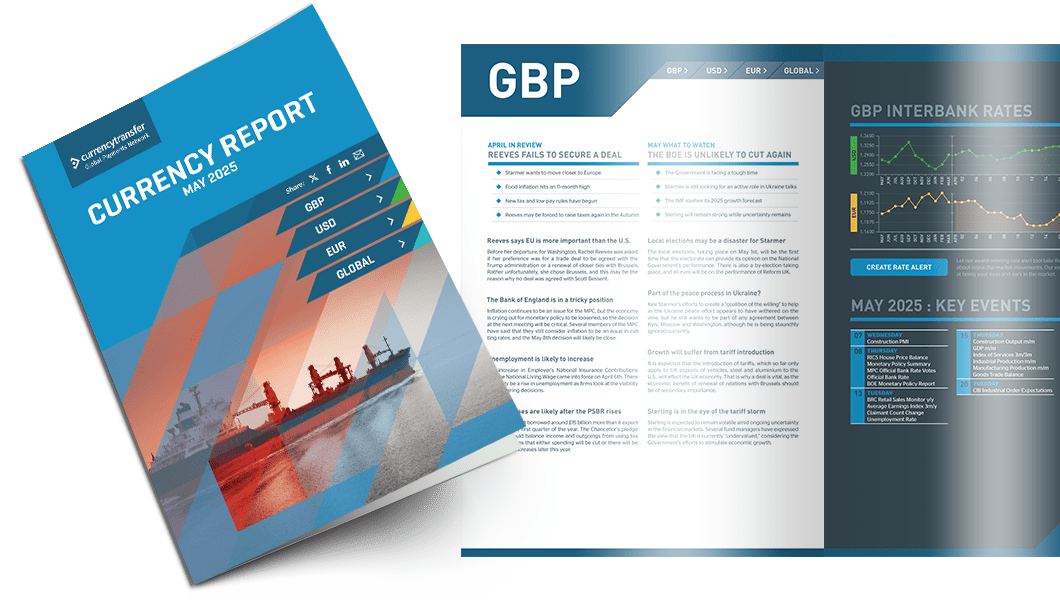
Highlights
- Rates to hit 4.5% this week in what may be the last hike
- Yellen wars of debt ceiling catastrophe
- Eurozone services decline overall as Germany recovers
Services output is propping up output
There is no doubt that the investiture of the King and Queen provided a well-needed feelgood factor, but it is hard to see that lasting more than a couple of weeks, or making any practical difference to the economy.
Growth in the all-important services sector reached its highest level in eight months in April. The sector which generates two of every three pounds of activity has lifted the economy further away from recession.
The results of last week’s local elections provided encouragement to the opposition that they will form the next national government but fell short of the landslide that they were predicting. Indeed, polling analysts were unable to confirm that the Labour Party would have an overall majority.
This brings into consideration the idea of a coalition between Labour and the Liberal Democrats, which is far from ideal for either one.
For Labour, the idea of having to share power, at least notionally, with the country’s third party would be a major problem for the left which would be firmly tethered in its wish for reform.
For the Lib-Dems, it would raise memories of 2010, when they shared power with the Conservatives. It proved a launch pad for the current Government to drive Brexit, while they again fell by the wayside.
The Monetary Policy Committee will meet this week to agree, in all probability, another hike in short-term interest rates.
Given the level of predictability about the hike, most attention will be focused on Andrew Bailey’s press conference which follows the meeting.
While inflation remains at or very close to double figures, it will be a hard sell for Bailey to convince markets that the Central Bank is ready to abandon its fifteen-month policy of tightening monetary policy.
Data for Q1 GDP will be published on Friday. It is expected that growth was at a bare minimum between January and March, rising by just 0.1%.
While the Government insists that their policies are the right ones for the economy it won’t be until GDP is rising and inflation is falling that there will be any trust in Rishi Sunak’s Cabinet.
Last week, Sterling reached its highest level since last May versus the dollar as the Fed gave a hint that it may pause its own programme of rate hikes.
It reached a high of 1.2652 and closed at 1.2531.

Read our latest currency report
Most impactful events planned this month and how they could impact your business
Fed and ECB about to diverge. What does that mean for the dollar?
Jerome Powell gave a broad hint that there will be a pause in interest rate hikes in order to allow the economy to catch up, While Christine Lagarde was, if anything, more hawkish than she has been in recent meetings.
It is not as if the U.S. economy is struggling any more than the Eurozone, which would provide encouragement to those feeling a recession is a possibility, but it is more to do with the fear of inflation that is far more prevalent on this side of the Atlantic.
While the Fed has provided a degree of advance guidance of its intention to halt rate hikes, the ECB is only not providing fifty point hikes as a compromise between the hawks and doves.
Last Friday’s publication of the April employment report failed to dampen the market’s view that a pause is coming, despite the headline data for new jobs created coming in far stronger than the market had expected, which simply underlined the unpredictability of the data.
253k new jobs were created in March. However, the March number was revised significantly down from 236k to 156k which provided some encouragement to the more dovish analysts.
Overall the unemployment rate fell from 3.5% to 3.4%, while hours worked and the participation rate were unchanged.
Average hourly earnings rose both month-on-month and year-on-year, which in normal times would be a red flag for the Fed, but the revision in the headline means that the data was more in line with market expectations.
The dollar fell a little on the week as the combination of the Fed meeting and the jobs report were pretty much as expected. It remains in a narrow range that has prevailed for the past month.
It fell to a low of 101.02 and closed at 102.28.
This week will see the release of inflation data. The headline figure is likely to have remained at 5%, while core inflation is expected to fall to 5.5% from 5.6%.
This is in line with the Fed’s predictions and will do nothing to the expectation that rates will be unchanged while the data remains on its current path.
ECB will continue to hike rates until inflation is under control
Services output was generally lower in the Eurozone in April, with one exception being Germany, where the services PMI rose from 55.7 to 56. Germany accounts for a significant part of overall output in the region, so it was welcome to see that the region’s largest economy was beginning to see some green shoots of recovery, despite the continued belief that it will fail to escape a recession this year.
The overall change in manufacturing, compared to services activity in the developed world is emphasised in the Eurozone, where services account for two-thirds of output, much the same as in the UK.
Klaas Knot the Governor of the Dutch Central took a look forward yesterday to future meetings of the ECB and commented that core inflation remains too high despite a welcome fall in the headline.
There is almost certain to be some divergence in the actions of the ECB and Federal Reserve in the next two or three meetings. Unless the data moves out of line, the Fed is likely indeed its programme of rate hikes, while according to Ms Lagarde, there is still work to be done in the fight against inflation.
As far as the FX market is concerned, the euro will remain quite well-supported over the rest of the current quarter, while rates are close to neutral in the Eurozone. The danger will come if they move into restrictive territory while inflation is still considered too high.
At this point, as GDP comes closer to recession the ECB may have little option but to pause.
Last week, the single currency was virtually unchanged. It rose to a high of 1.1091 but fell back to close just one pip higher at 1.1020.
Have a great day!

Exchange rate movements:
05 May - 09 May 2023
Click on a currency pair to set up a rate alert
Alan Hill
Alan has been involved in the FX market for more than 25 years and brings a wealth of experience to his content. His knowledge has been gained while trading through some of the most volatile periods of recent history. His commentary relies on an understanding of past events and how they will affect future market performance.